AN AIRCRAFT MECHANIC’S STORY:
Written by Dennis Currie,
Catkiller Crew Chief, Inspector, 1966—67
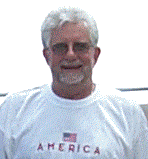
2011
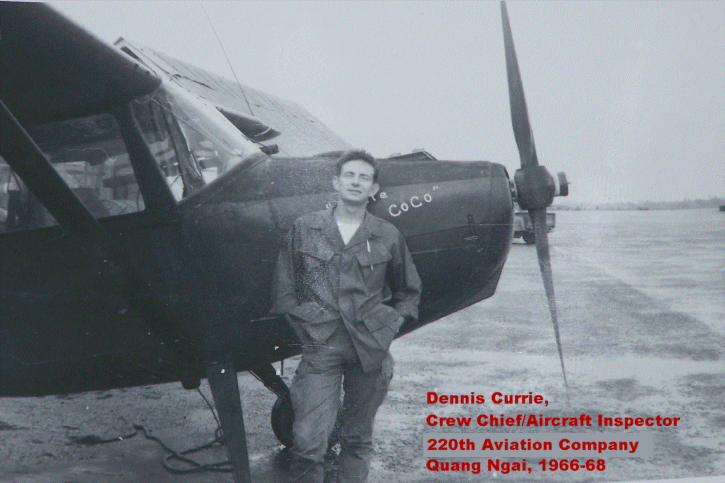
I arrived at Phu Bai in June of 1966, when the company was a relative tent city. I was struck by the fact that the country wasn’t as backward as I had initially imagined. The airport had a terminal and a tower and even though we were in tents, we still had our sidewalks:
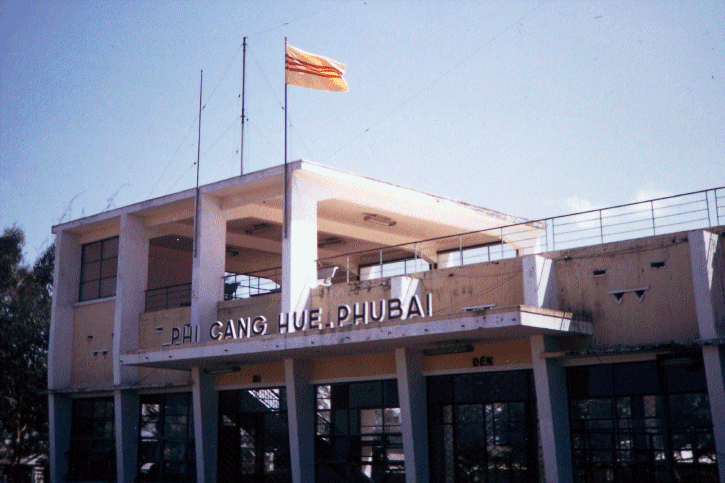
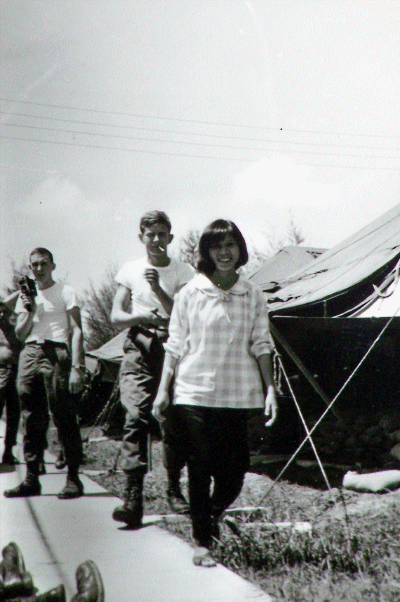
Actually tents weren’t so bad, because during the monsoon season even though it wasn’t cold by northeast U.S. standards, it could feel like you were freezing and damp all of the time. The tents held in the heat much better I thought, a good thing in the monsoons, bad in the dreadful summer months. I suspect many of you recall placing a 40 watt light bulb in your foot locker to keep your stuff dry and keep mildew from forming on your socks and underwear. Happily, we had these wonderful women who helped us with our laundry and keeping our areas tidy for those surprise inspections:
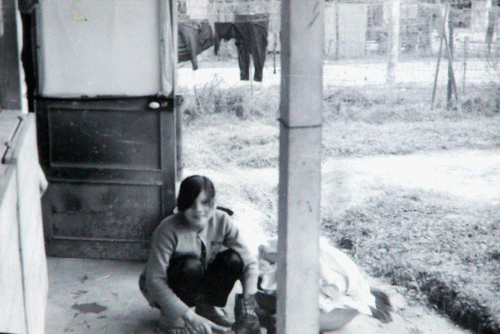
I’m not sure why, but the end of my bunk was the enlisted mans "casino royal." I saw more paychecks swap hands in the few months I was in Phu Bai, some men still owed their gambling partners money when they left country. I just simply watched. I also can recall that we were put to work filling sand bags to build our numerous bunkers around the company area, when we weren’t performing maintenance on the aircraft:
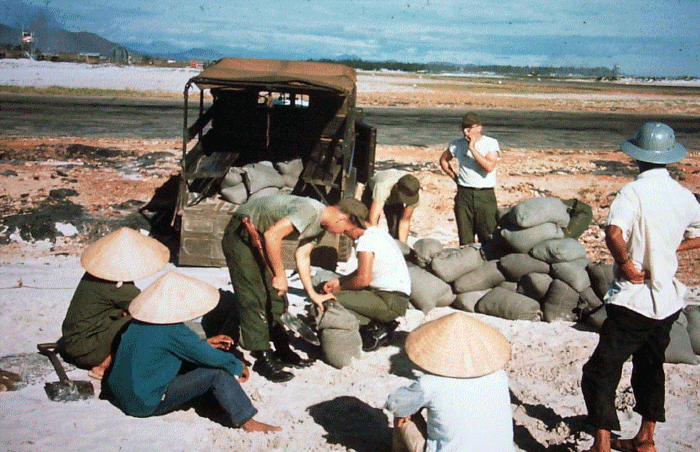
My MOS was 67D20, so I had an opportunity to work on many aspects of the aircraft. I even replaced the rings on the pistons and honed cylinder walls to repair compression issues on those O–470’s. The crews that worked in the hangar were some of the most talented folks I had the pleasure of working with.
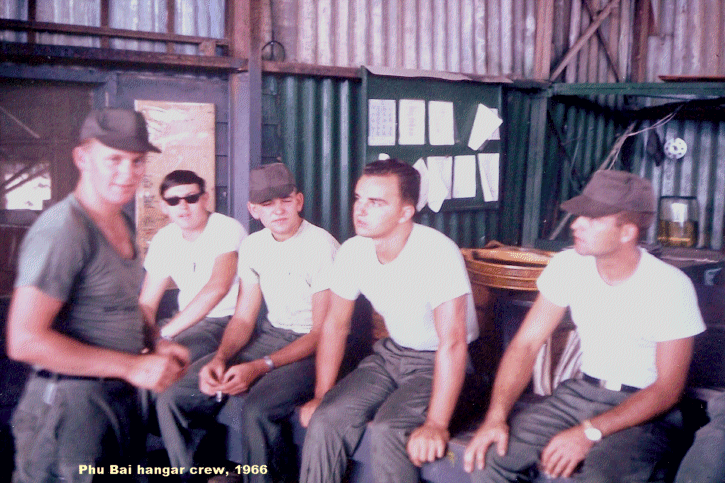
I enjoyed Phu Bai and especially looked forward to the convoys to Hue, where we took our deuce&–and&–a half’s on LST’s to the refrigerator ships off shore to stock up on food. I also worked at the EM club as a bar tender on my off duty time, so those trips to Hue were also a beer run of sorts.
For those who recall we always seemed to have our fair share of Ballantine’s. The reason was that in order to get a pallet of let’s say Pabst Blue Ribbon (PBR), 88 cases per pallet, we needed to take two pallets of Ballantine’s. So, what was one to do? Even then we could barely call Ballantine’s beer, and as a bar tender I would only hope that our Marine and Sea Bee cousins who would wander over, from time to time, would opt to purchase it instead of our treasured PBR. The EM Club was also one of the first real structures in the Company area, so we were one happy troop when it finally opened.
I’m cleaning tables in the one picture, and we even had slot machines:
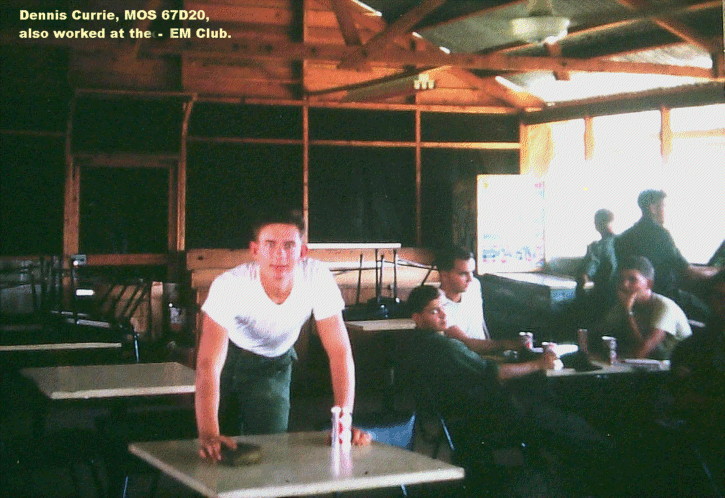
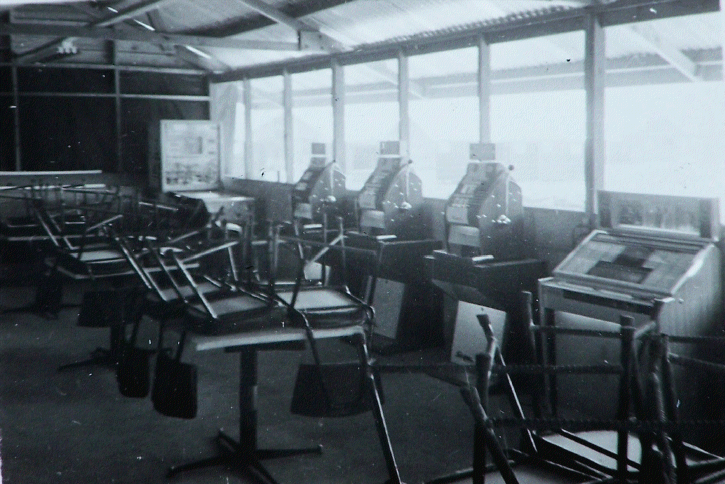
For whatever reason, sometime in the December timeframe, 1966, I was amongst a group of mechanics chosen to go to the platoons to perform the 100 hour inspections there. Quang Ngai was home to MACV for us and was located within the city. So everyday was a road trip to the airfield, and we got to see a number of sites along the way, from the businesses in the city, and people getting ready for their days work, to little girls on their way to school:
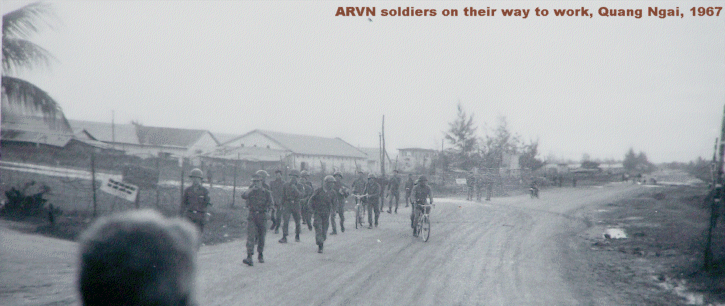
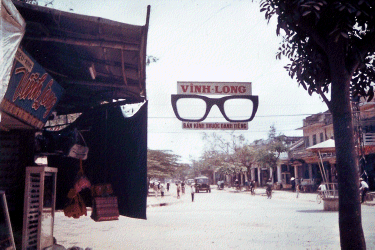
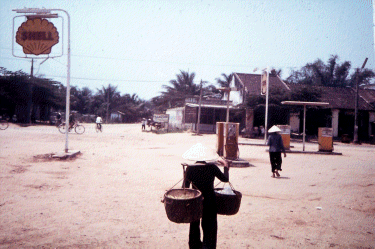
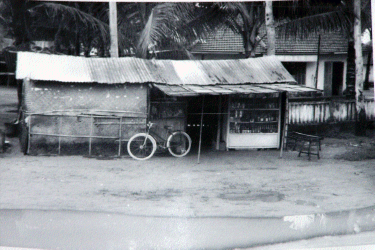
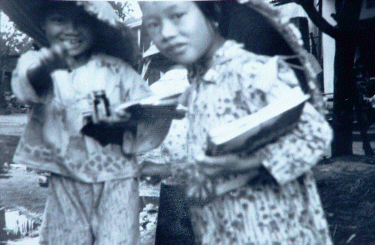
I was always impressed with the construction of a very large cathedral being built on the way. However, the construction had apparently stopped during the conflict, and I have always wondered if the community ever finshed it. I still imagine how beautiful it may be today, if they did.

Because we were so far south of Phu Bai, the trip to Quang Ngai, especially, lost about six hours for the crews and aircraft, I believe, flying back and forth to Phu Bai to have their maintenance performed. When I arrived at Quang Ngai, I found out quickly that I was there not only to perform that maintenance, but also to replace a crew of short timers. I must have had a knack for forms and record keeping, because I soon found myself keeping track of all of the logs to ensure that our maintenances were performed and that all of the pilots log entries were properly taken care of.
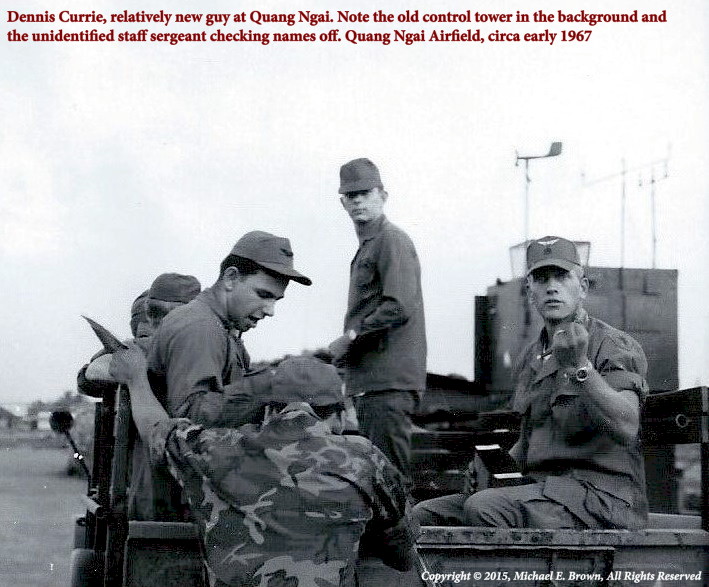
It was so busy during those first months, my head was spinning. However, as we received more replacements in the platoon, I was getting more free time to fly with the pilots, especially Capt. Boyles, aka "Dai Wi Snoopy." He had his moniker "Snoopy" as well as the Red Barron painted on his aircraft and his helmet.
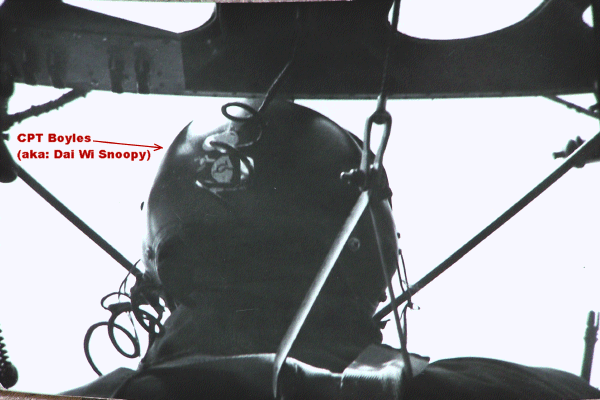
Quang Ngai Airfield
ATC Tower Upgrade
The photo below provided by 1LT Joseph Kurt Lauer, Catkiller 13, 1st Platoon, shows the old Tower location:
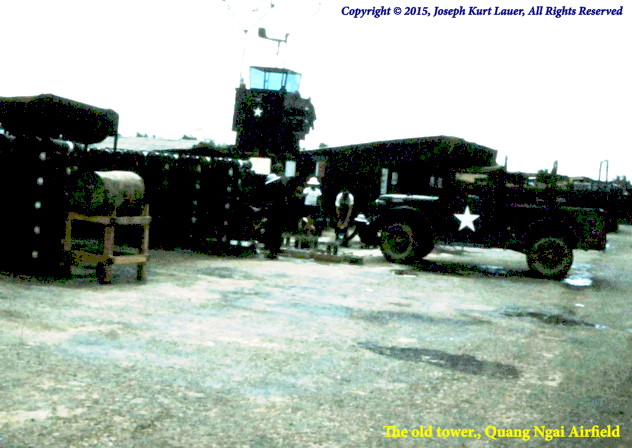
Major Estes and Captain Boyles commiserating with one of our Warrant Officer Pilots on the upcoming installation of an upgraded Air Traffic Control Tower being installed at the Quang Ngai Airfield. A new platform had been built to house the new unit, and our officers were awaiting the arrival of the CH-47 which was to lift the ATC unit onto its new home.
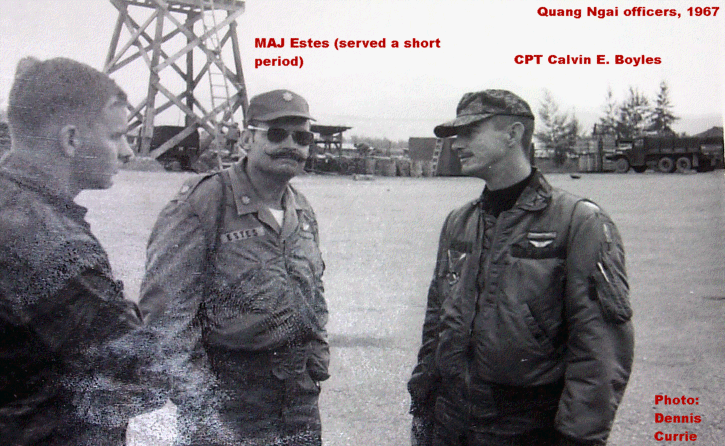
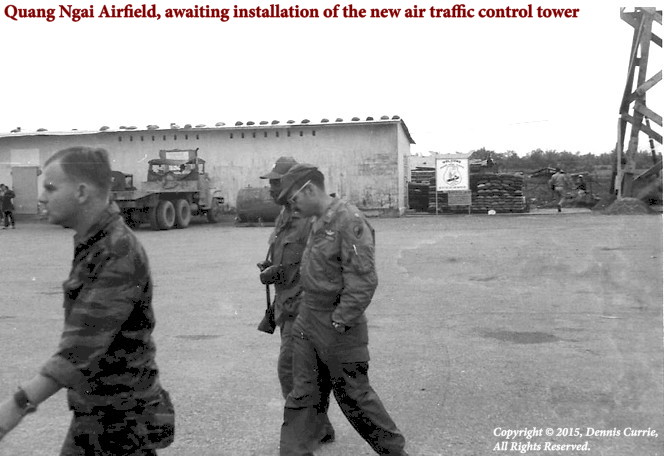
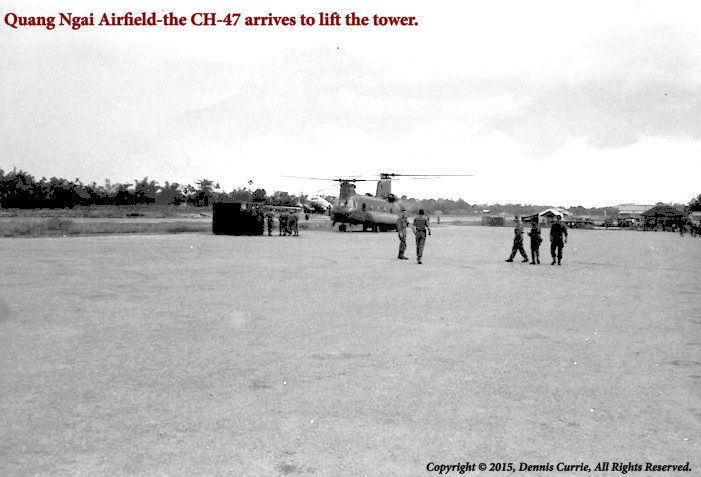
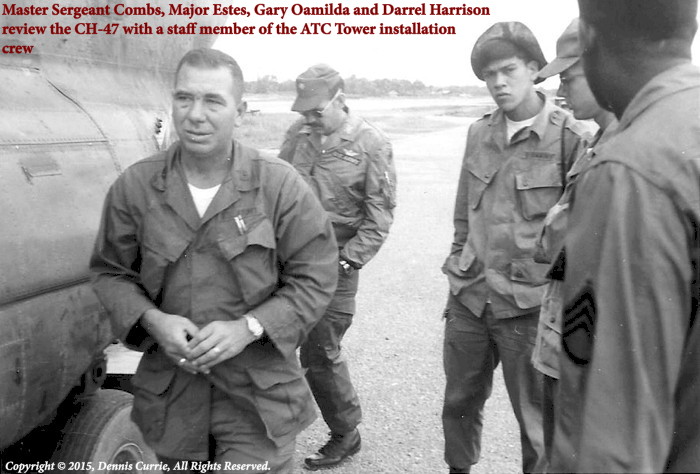

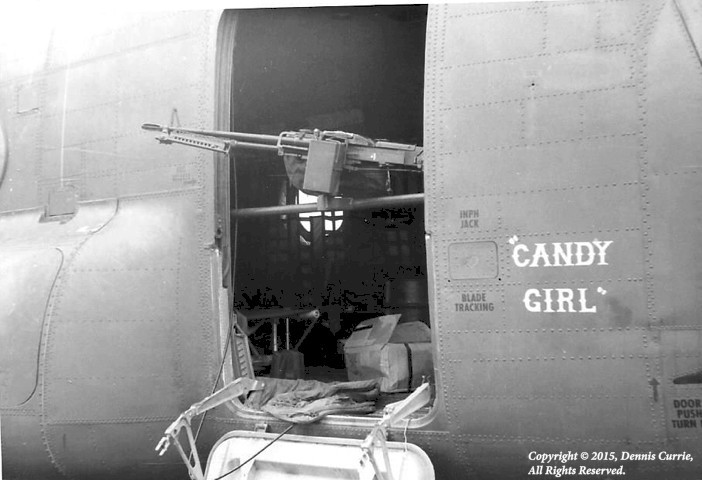
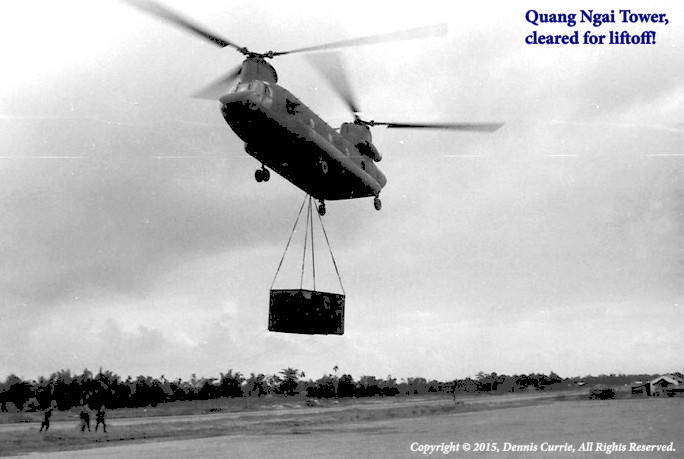
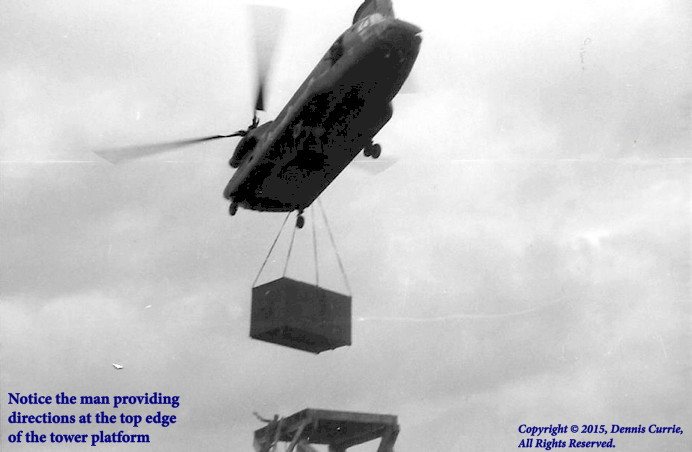
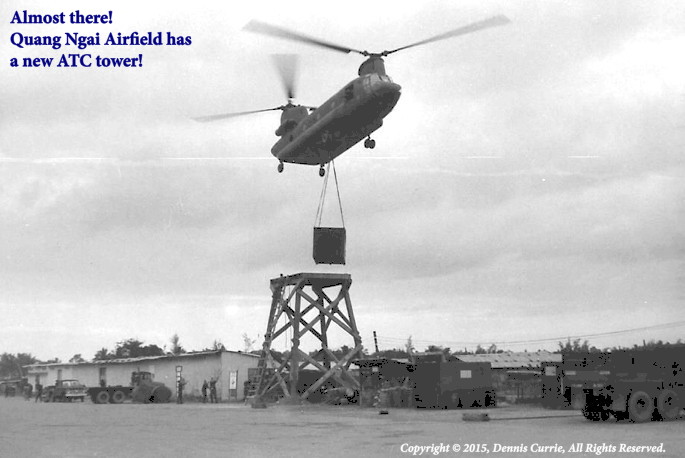
This photo sequence was taken possibly mid 1967. The photos were not developed until January 1968,
upon my return home to Flint Michigan, so I’m not sure of the exact date the tower was installed.
CPT Aubrey Lockett was the 1st Platoon Commander, and after he departed MAJ Estes took over the platoon until just before we moved north to Phu Bai. We gave CPT Lockett a going away party, and I took this photo. CPT Calvin Boyles took over as Platoon Commander after MAJ Estes, to orient the 21st Aviation Company, as they took over our former area of operation:
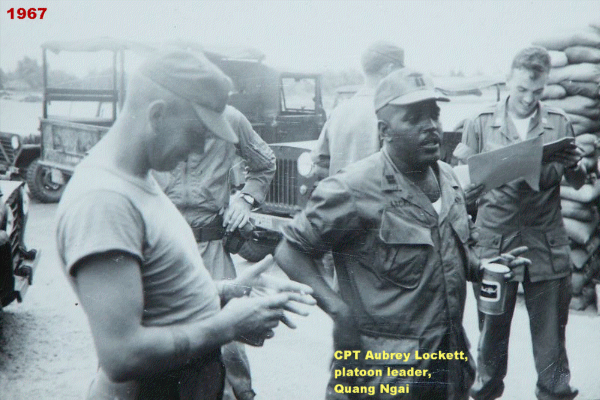
Other Photographs About The Same Time As Above—
Identification Help Appreciated!
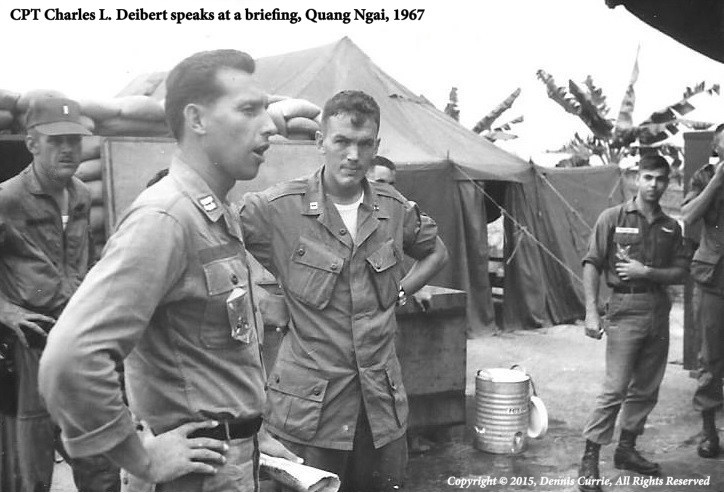
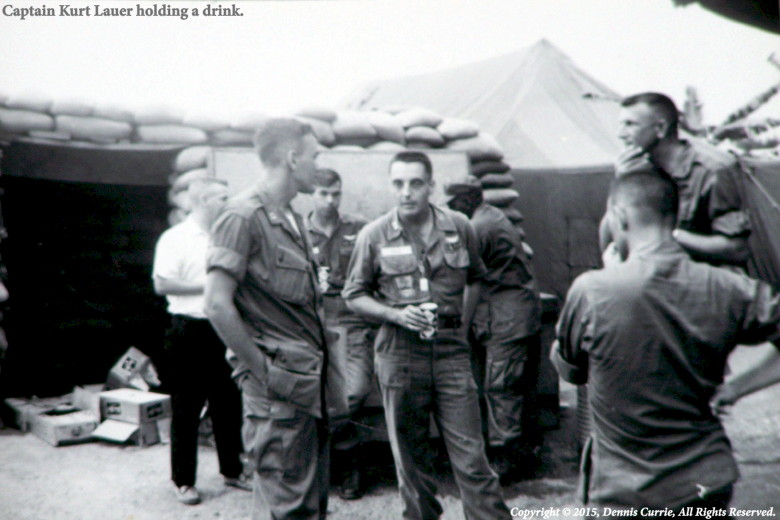
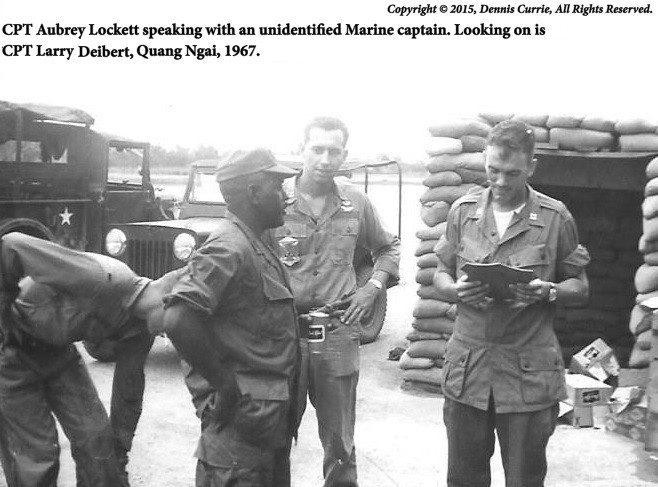
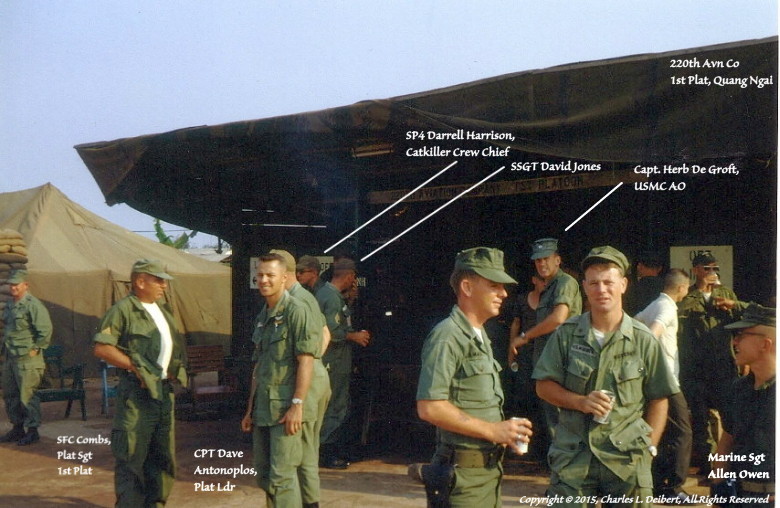
In this pic above, in the lower right corner, is “pound for pound” the best Marine Sergeant with whom I ever had the pleasure and honor of serving: Allen Owen.
He was denied a commission as an officer because he was too short—another one of those dumb military bureaucratic decisions. Please so note in adding his name of in this photo.
Herbert W. “Herb” De Groft, LtCol, USMC, Retired, AO, April 1966–May 1967
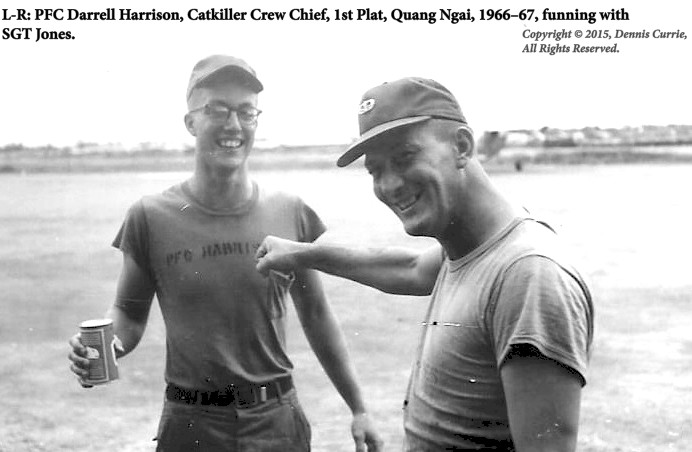
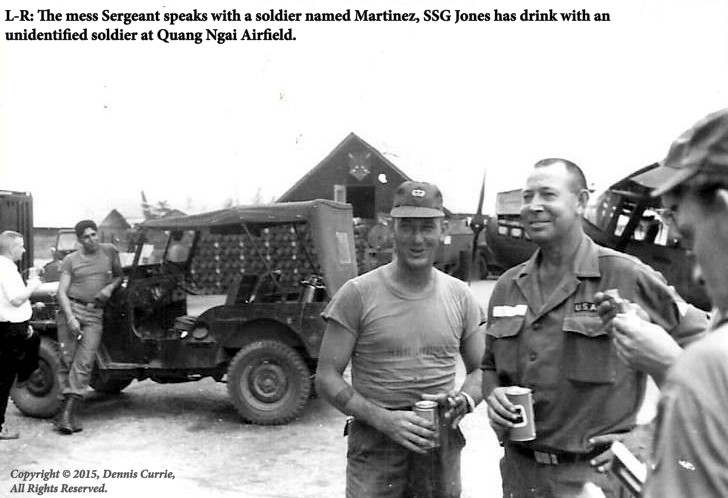
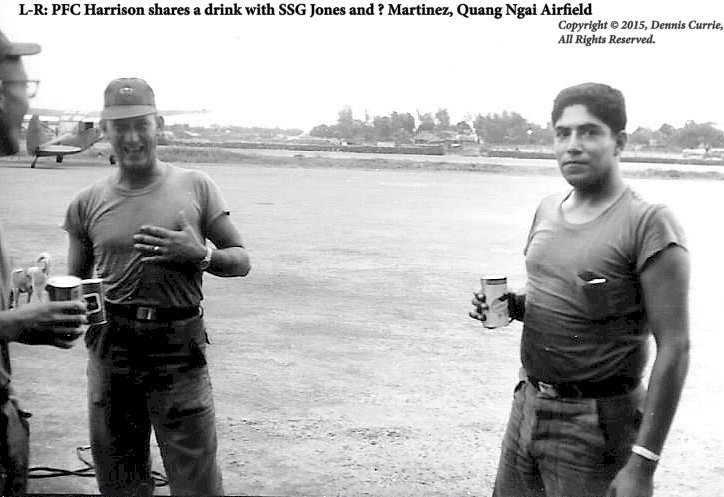
We flew back along the Cambodian border to the Special Forces outposts to support their missions with the Montgnards. I grew to hold those guys in very deep respect, given the remoteness of their location and the size of the enemy force in their location. I received two Air Medals for taking the back seat when it was available. The camaraderie was phenomenal at Quang Ngai. Being attached to a MACV Compound, we associated with ROK Marines, Aussies ( man they really could drink) , Air Force, and Marines, so I extended for another six months. That’s when I learned about Mothers and their intuition. I hadn’t mentioned in my letters home about extending, and as was my style I always pulled a surprise on my family when I returned home for a leave. When I arrived at my back door for my thirty day leave, my father greeted me and he shook my hand like I had never had it shook before, however; when I turned to my mother, the first words she spoke to me was, "Your going back aren’t you?" I was beside myself, because I had hoped to ease into that conversation. It was a somber homecoming for my Mom.
If my first six months at Quang Ngai in 1967 were routine—my return was anything but. Things started heating up in our Province, and we experienced our first mortar attack on the compound. I am always amazed at how accurate those guys are when they start walking those rounds into an area. I’ll attach some pictures of the damage we sustained:
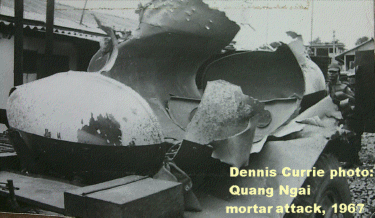
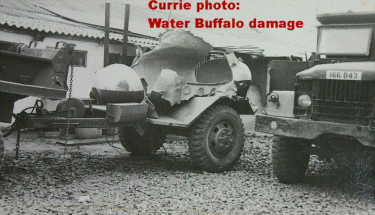

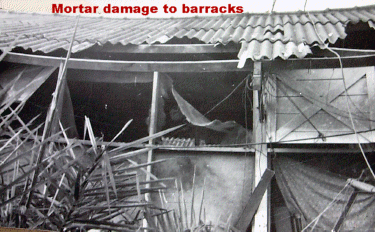
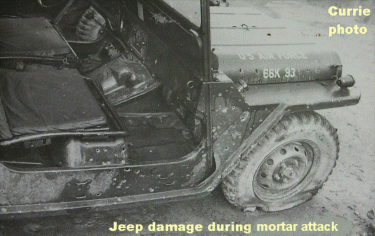
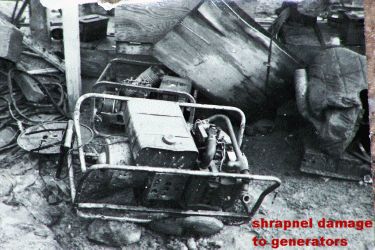
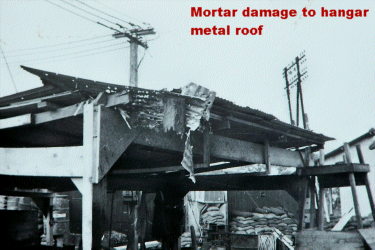
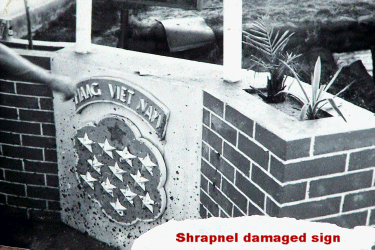
My row of rooms took a heavy toll, but not my room. Fortunately, I lived relatively close to the corner of our row of billets and was able to quickly get under cover. I was told that our billets were actually horse stables used by the French when they were there. Anyway, after that we were on alert more often.
Old photos taken at Quang Ngai surface years later on eBay:
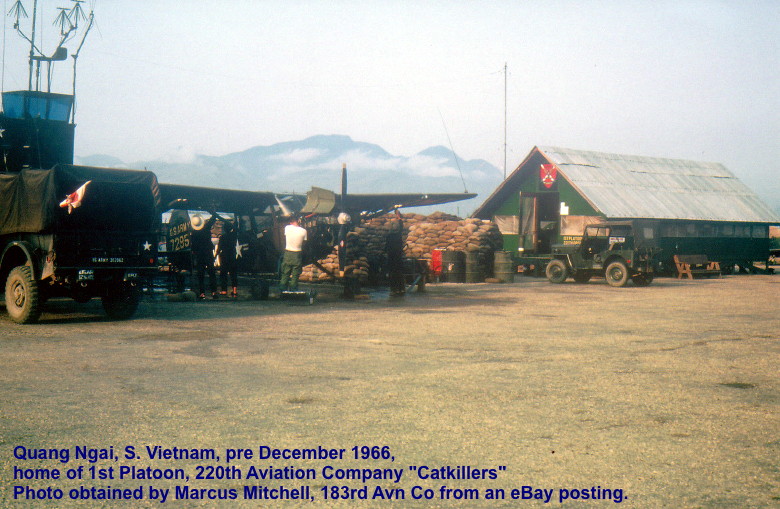
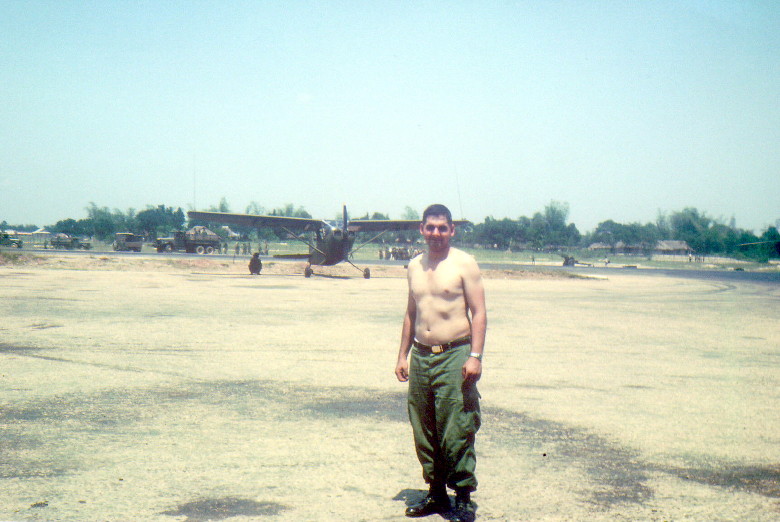
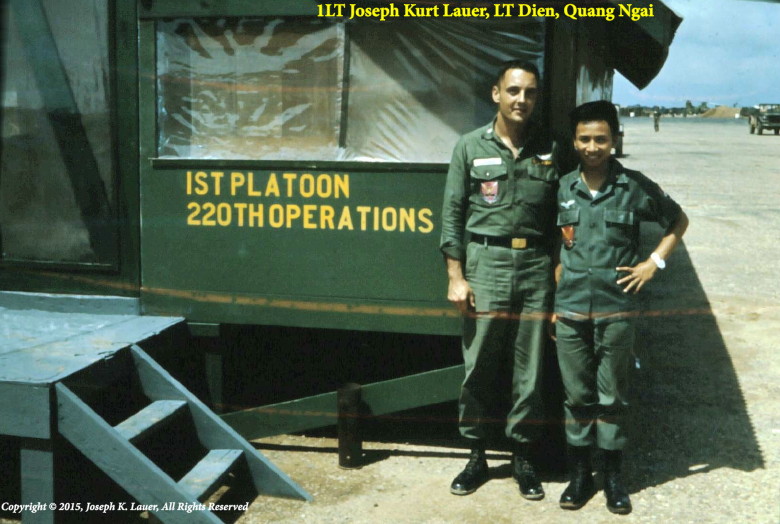
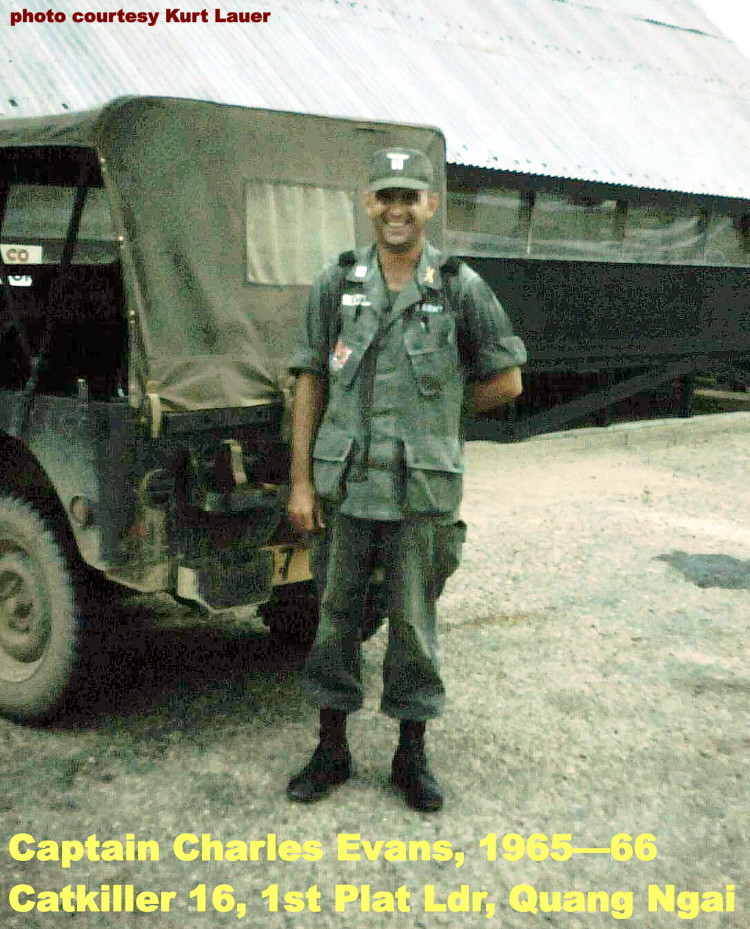
Comments:
That picture [above] is of my Birddog, 957. I crewed that bird from July 65 to Jul 66 when a young 2LT wrecked it. It was my birthday so I wasn’t in it. This brings back some memories. The operations building was built mostly by one of our civilian workers. We gave him the lumber and sheet metal; and I bought him a hammer and some nails and when I gave it to him he cried. He was a good man. I was due to rotate in 7 July and I do believe my bird was destroyed the next day. I put a lot of hours into that bird and it served us well. I had recorded 23 holes in the aircraft during my time. Cpt Everett, Cpt Welsh, Lt Evans all flew my aircraft. I was assigned to the 220th right out of school as a mechanic. There were 11 of us and we were sent to Fort Lewis and we were not ready to ship so we stayed there and went over later and when we got there the company had a slot for a crewchief so I took it. That was a good unit under Cpt Everett and we had many good times. The bottom picture is at Quang Ngai, and I believe that is Ron Whipple.
SP5 Kenny R. Vegoren (CSM, Retired), Crew Chief, 1st Platoon, Quang Ngai, 1965—7 July 1966.
Don I'm pleased I had something useful to share w/220th~! I suspect the shirtless troop may very well be the crew chief? I seem to recall 4 pictures in total? A third showed this troop pointing his weapon at 2 or 3 local "VC POWs" which I knew was just 'joke' for the camera. There was no mag inserted in weapon & too much smiling for it to be the real deal!! I revisited the Ebay Vietnam War photos, 19 pages in all w/each page holding 200 pictures. The pictures of subject were no longer posted. In early 67, the 183rd sent a detachment of maybe four 01s to Marble Mt. to assist in I Corps operations. "Charlie" zeroed on the AF & scored direct hits on our planes in the revetments. Aircraft were replaced & the 183rd completed their TDY as directed. If you have or can access photos of our destroyed L19s, I would certainly like to have them for inclusion in our website. [Editor: Three photographs were sent, courtesy of Joseph Kemper, Crew Chief, Da Nang]
Marcus Mitchell, 183rd Aviation Company
Photos by Dennis Currie:
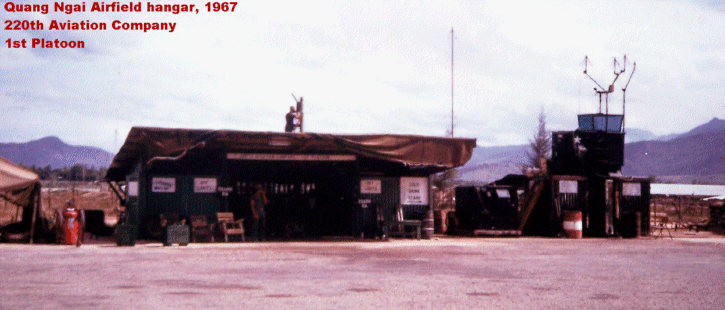
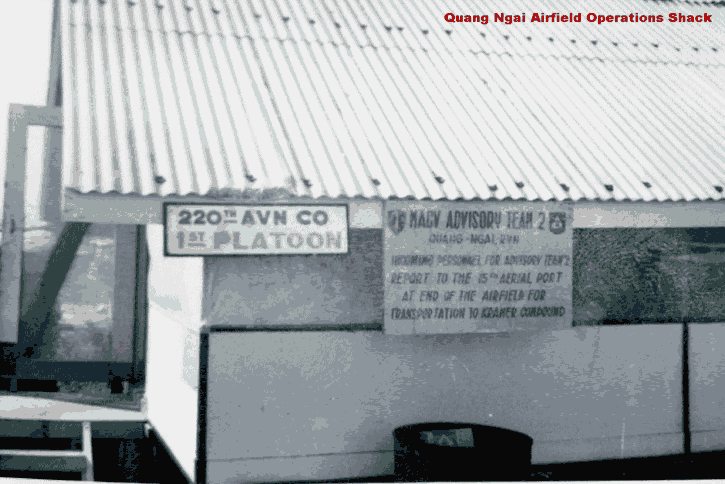
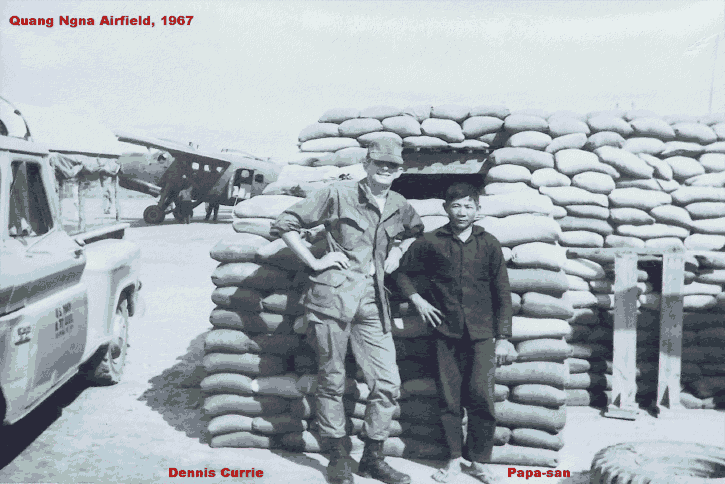
In addition, the weather in 1967 produced a typhoon which flooded the compound, I could not believe the flooding that occurred that night. I was on guard duty at the airfield and we had taken additional precautions with the aircraft to tie them down and place sand bags along every surface of the wings and elevator sections to prevent damage. However, having survived a night of heavy winds and rain, no sleep for anyone that night. We waited patiently for the truck to show up the next morning. What we didn’t realize was that the airfield had literally become an island. So the sight of a Huey flying into the airfield didn’t seem unusual, until the pilots started getting out. Fortunately, the water receded fairly quickly, however, I can remember the villages that surrounded us were devastated and I felt badly that they had literally lost everything in that storm. Guard duty would turn out to be when stuff happened, and since we were surrounded by the ARVN Artillery Units, literally 105 Howitzers on one side and 155’s on the other, our perimeter was covered by them. Very often Sikorsky Sky Cranes would come in and airlift the ARVN 155’s to an operation. I always enjoyed those days when that happened, such an awsome sight. Our airfield was our second home, and we had our family there as well. We had a very comfortable operations shack, a more than adequate, air condition hangar — Grin! Our own ATC tower, which was later moved to a much higher location. Plus we had state of the art 55 gallon drum revetments to protect our aircraft. We also couldn’t do without our dear Papa–Sans, what a talented crew they were, our outhouse , Adirondack chairs — well almost — and other wooden products were made out of ammo crates. These guys were masters with very primitive tools. The south end of our runway was a free fire zone, so the C–123’s and the C–130’s that came to our airfield would always put on a show when they took off like rockets, with their jato–assist engines, to avoid any enemy fire that might come from that direction.

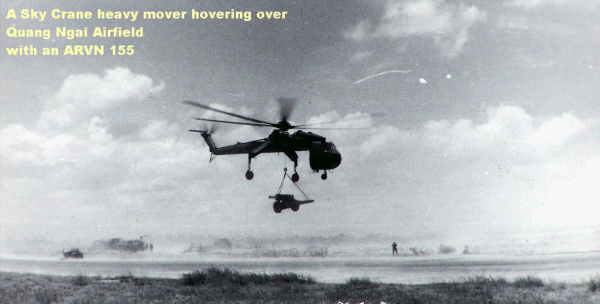
One guard duty night however, I had just gone into the operations shack to lay down after my first tour, when all hell broke loose. When I raised up to look through the screen towards the aircraft, all I could see were red tracer rounds whizzing down the tarmac. Since we shared guard duty with our Air Force brothers, and the 220th had the only vehicle maintenance grease pit, we must have looked a sight—with the four of us all crouched down in that oily hole. As suddenly as it erupted, it stopped, so another person and I literally started low crawling north on the tarmac to get to the 105 Howitzer command area. We didn’t know it at the time, but there was an Army Advisor attached to them. So as we were crawling towards the roadway to the unit, we saw another figure, crouched and moving towards us. So here we are, shouting, "Halt who goes there!", and this voice responds saying, "Sgt. Pitts." I couldn’t believe it, this was my DI in basic training!! As it turned out, the ARVN’s decided to run a patrol through that area and forgot to coordinate with our airfield perimeter guard and they began shooting at each other. What a racket they made!!
In December 1967, we began the move north to Phu Bai and what would be the end of the 1st platoon. The 21st (I believe) Aviation Co. was to replace us, and Capt. Boyles was to stay behind to help with their transition. The Company area, I was surprised to see, had made a phenomenal transition as well, since I didn’t remember any tents when I arrived back to the Company Area. Some of the crew chiefs were slated to go to the 2nd, 3rd and 4th platoons, as I understood it. However, at that point I was a short timer and by mid January I was on my way down the coast to Ben Hoa and on my way home. I completed my Army career at AVLABS in Fort Eustis, Virginia, where I crewed a U–8D, U–6A, U–1A and even a CH–21 and Huey. We worked closely with the civilian engineers developing technology for Army aircraft. I logged lots of flight time there, since all of the experiments required me to be on board to help with data collection and support. However, in reality at the time, I had no clue what these engineers were talking about, all I knew was that when we were performing the stall warning tests in the U–1A , the young engineers I think were having second thoughts on their career choices. Grin!!
Dennis




